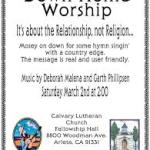I really enjoy my Kindle. But when it comes to reading scholarly works, I need to flip back and forth, mark pages, study illustrations, and generally read more carefully. I kind of need hard-copy printed books to do that.
Now it turns out that the Millennial generation, computer-literate and screen-oriented as they are, are the same way, maybe more so! Their preference for reading old-fashioned books is overwhelming.
See why, with details about the mental difference between reading on paper and reading on a screen after the jump.
From Why digital natives prefer reading in print. Yes, you read that right. – The Washington Post.
Textbook makers, bookstore owners and college student surveys all say millennials still strongly prefer print for pleasure and learning, a bias that surprises reading experts given the same group’s proclivity to consume most other content digitally. A University of Washington pilot study of digital textbooks found that a quarter of students still bought print versions of e-textbooks that they were given for free.
“These are people who aren’t supposed to remember what it’s like to even smell books,” said Naomi S. Baron, an American University linguist who studies digital communication. “It’s quite astounding.”
Earlier this month, Baron published “Words Onscreen: The Fate of Reading in a Digital World,” a book (hardcover and electronic) that examines university students’ preferences for print and explains the science of why dead-tree versions are often superior to digital. Readers tend to skim on screens, distraction is inevitable and comprehension suffers. . . .
Pew studies show the highest print readership rates are among those ages 18 to 29, and the same age group is still using public libraries in large numbers. . .
Researchers say readers remember the location of information simply by page and text layout — that, say, the key piece of dialogue was on that page early in the book with that one long paragraph and a smudge on the corner. Researchers think this plays a key role in comprehension.
But that is more difficult on screens, primarily because the time we devote to reading online is usually spent scanning and skimming, with few places (or little time) for mental markers. Baron cites research showing readers spend a little more than one minute on Web pages, and only 16 percent of people read word-by-word. That behavior can bleed into reading patterns when trying to tackle even lengthier texts on-screen. . . .
Another significant problem, especially for college students, is distraction. The lives of millennials are increasingly lived on screens. In her surveys, Baron writes that she found “jaw-dropping” results to the question of whether students were more likely to multitask in hard copy (1 percent) vs. reading on-screen (90 percent).
















